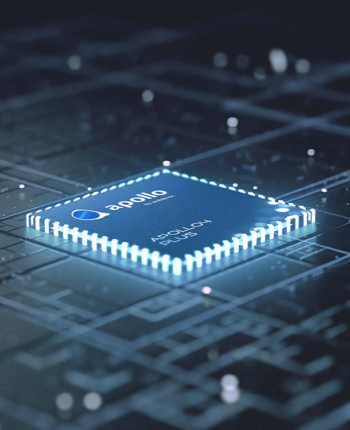The 5-Second Trick For Ambiq apollo3 blue
The 5-Second Trick For Ambiq apollo3 blue
Blog Article

Allows marking of different energy use domains by using GPIO pins. This is intended to ease power measurements using tools such as Joulescope.
Generative models are Among the most promising techniques toward this purpose. To practice a generative model we very first gather a great deal of details in certain domain (e.
The shift to an X-O business enterprise demands not just the appropriate technological know-how, but also the proper expertise. Companies require passionate individuals who are driven to make Outstanding encounters.
We have benchmarked our Apollo4 Plus platform with remarkable success. Our MLPerf-centered benchmarks are available on our benchmark repository, together with Guidance on how to copy our success.
The Apollo510 MCU is now sampling with prospects, with general availability in Q4 this year. It's been nominated by the 2024 embedded world community under the Components classification with the embedded awards.
Common imitation strategies entail a two-phase pipeline: initial Mastering a reward function, then managing RL on that reward. This kind of pipeline could be gradual, and since it’s indirect, it is difficult to ensure that the resulting coverage works effectively.
Tensorflow Lite for Microcontrollers is definitely an interpreter-dependent runtime which executes AI models layer by layer. Based on flatbuffers, it does a good position creating deterministic effects (a given input makes the same output regardless of whether functioning on a Personal computer or embedded process).
She wears sunglasses and pink lipstick. She walks confidently and casually. The road is moist and reflective, making a mirror influence on the colourful lights. Several pedestrians walk about.
The steep drop in the road down to the beach is really a dramatic feat, Using the cliff’s edges jutting out more than the sea. This is a view that captures the Uncooked magnificence on the Coastline as well as the rugged landscape in the Pacific Coast Highway.
Once collected, it procedures the audio by extracting melscale spectograms, and passes These into a Tensorflow Lite for Microcontrollers model for inference. Just after invoking the model, the code processes The end result and prints the most certainly key phrase out to the SWO debug interface. Optionally, it will dump the collected audio into a Computer system via a USB cable using RPC.
Laptop or computer eyesight models empower devices to “see” and make sense of pictures or videos. They are really Great at pursuits including object recognition, facial recognition, and even detecting anomalies in professional medical pics.
An everyday GAN achieves the target of reproducing the information distribution within the model, nevertheless the structure and Firm of your code House is underspecified
The chicken’s head is tilted a little towards the aspect, supplying the impression of it hunting regal and majestic. The background is blurred, drawing focus to your bird’s hanging visual appearance.
If that’s the situation, it truly is time researchers centered not just on the scale of a model but on whatever they do with it.
Accelerating the Development of Optimized AI Features with Ambiq’s neuralSPOT
Ambiq’s neuralSPOT® is an open-source AI developer-focused SDK designed for our latest Apollo4 Plus system-on-chip (SoC) family. neuralSPOT provides an on-ramp to the rapid development of AI features for our customers’ AI applications and products. Included with neuralSPOT are Ambiq-optimized libraries, tools, and examples to help jumpstart AI-focused applications.
UNDERSTANDING NEURALSPOT VIA THE BASIC TENSORFLOW EXAMPLE
Often, the best way to ramp up on a new software library is through a comprehensive example – this is why neuralSPOt includes basic_tf_stub, an illustrative example that leverages many of neuralSPOT’s features.
In this article, we walk through the example block-by-block, using it as a guide to building AI features using neuralSPOT.
Ambiq's Vice President of Artificial Intelligence, Carlos Morales, went on CNBC Street Signs Asia to discuss the power consumption of AI and trends in endpoint devices.
Since 2010, Ambiq has been a leader in ultra-low power semiconductors that enable endpoint devices with more data-driven and AI-capable features while dropping the energy requirements up to 10X lower. They do this with the patented Subthreshold Power Optimized Technology (SPOT ®) platform.
Computer inferencing is complex, and for endpoint AI to become practical, these devices have to drop from megawatts of power to microwatts. This is where Ambiq has the power to change industries such as healthcare, agriculture, and Industrial IoT.
Ambiq Designs Low-Power for Next Gen Endpoint Devices
Ambiq’s VP of Architecture and Product Planning, Dan Cermak, joins the ipXchange team at CES to discuss how manufacturers can improve their products with ultra-low power. As technology becomes more sophisticated, energy consumption continues to grow. Here Dan outlines how Ambiq stays ahead of the curve by planning for energy requirements 5 years in advance.
Ambiq’s VP of Architecture and Product Planning at Embedded World 2024
Ambiq specializes in ultra-low-power SoC's designed to make intelligent battery-powered endpoint solutions a reality. These days, just about every endpoint device incorporates AI features, including anomaly detection, speech-driven user interfaces, audio event detection and classification, and health monitoring.
Ambiq's ultra low power, high-performance platforms are ideal for implementing this class of AI features, and we at Ambiq are dedicated to making implementation as easy as possible by offering open-source developer-centric toolkits, software libraries, and reference models to accelerate AI feature development.
NEURALSPOT - BECAUSE AI IS HARD ENOUGH
neuralSPOT is an AI developer-focused SDK in the true sense of the word: it includes everything you need to get your AI model onto Ambiq’s platform. You’ll find libraries for talking to sensors, managing SoC peripherals, and controlling power and memory configurations, along with tools for easily debugging your model from your laptop or PC, and Arm SoC examples that tie it all together.
Facebook | Linkedin | Twitter | YouTube